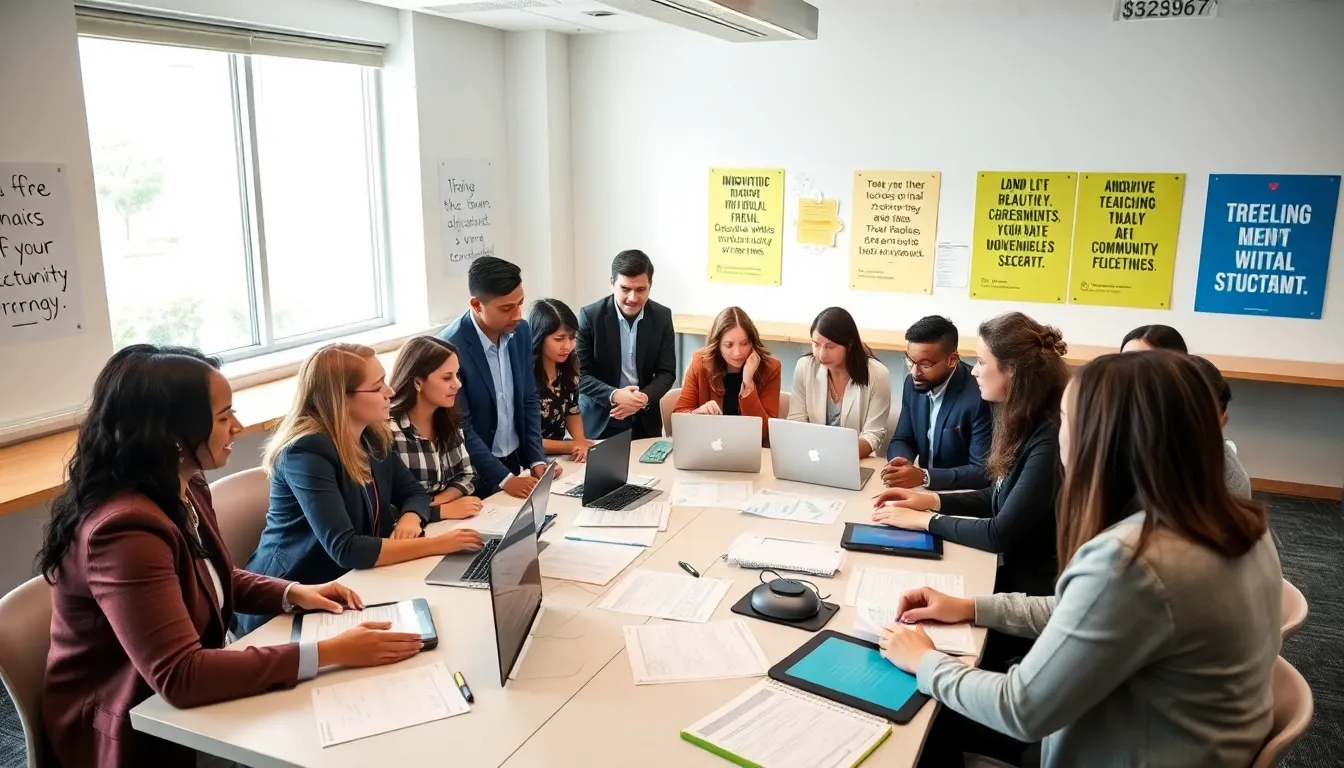Table of Contents
ToggleEducation is often touted as the great equalizer. But in reality, navigating the educational landscape today can feel like steering a ship through a storm, full of challenges that threaten to sink the hopes of students and educators alike. With funding issues, teacher shortages, and more swirling around like a hurricane, understanding these problems is crucial for anyone interested in the future of learning. So, grab your life jacket, because we’re about to jump into the turbulent waters of today’s educational issues. Spoiler alert: it’s a lot more complicated than just getting kids to school.
Funding and Resource Allocation

One of the greatest challenges facing education today is funding and resource allocation. Many schools, especially those in underprivileged areas, are struggling. Imagine being a principal whose budget feels like it’s perpetually stretched tighter than a rubber band. Without sufficient resources, schools can’t provide basic materials, let alone extracurricular activities that foster creativity and innovation. The consequence? A significant achievement gap develops between wealthy and low-income communities.
Worse still, relies heavily on local funding, often based on property taxes, which can lead to unacceptable disparities. This system forces schools in low-income areas to scrape by while those in affluent neighborhoods flourish. So, how can we close this gap? Alternative funding sources and equitable distribution of resources are vital. But change needs to happen quickly, students can’t wait for a budget proposal to pass through layers of bureaucracy.
Innovative funding models, including grants and public-private partnerships, might provide some relief, allowing schools to thrive instead of merely survive. At the end of the day, if our educational system continues to operate on a shoestring budget, students will be left clinging to the fringes.
Teacher Shortages and Retention
Next up on the educational rollercoaster is the teacher shortage crisis. Picture this: classrooms packed with kids, a curriculum that needs to be taught, and only a handful of teachers available to manage the chaos. It’s a recipe for disaster. While we need high-quality education, the current teaching workforce is dwindling. Many factors contribute to this problem, including low pay, increased workloads, and lack of respect within the profession.
Teachers are educators, counselors, and sometimes even parents to their students, but they often feel undervalued and overworked. As a result, many leave the profession entirely, an issue that compounds on itself. The more teachers leave, the greater the burden falls on those who remain. Retention strategies, such as better pay, mental health resources, and supportive work environments, are essential.
Imagine a scenario where experienced teachers actively mentor newer ones, fostering a solid foundation for the future. Attracting fresh talent and maintaining current educators isn’t just about perks: it’s about creating a culture that values teaching as a noble profession. The challenge lies in getting schools to understand their most valuable resource, their teachers, is at risk.
Curriculum Relevance and Standardization
In classrooms today, there’s a tug-of-war between keeping up with the times and adhering to standard curricula. The question arises: how relevant is the current curriculum to the world’s rapid changes? Many educational systems remain stuck, teaching content that feels dated alongside state-mandated standardized tests. This often stifles creativity and critical thinking in students, two essential skills for success in a rapidly evolving job market.
To tackle this issue, educators need to focus on updating curricula that encompass real-world experiences and challenges. Integrating subjects like technology, social responsibility, and emotional intelligence can help students prepare for life beyond the walls of academia. It’s about preparing individuals to think critically and adapt, rather than just regurgitating facts.
Conversely, standardization presents its own set of dilemmas. While aiming for fairness across the board, one-size-fits-all testing and learning modalities can leave students behind. The push for personalized learning experiences is gaining momentum, and rightly so. Education should empower students by catering to diverse learning styles and interests, allowing them to explore subjects that ignite their passions.
Equity and Access to Quality Education
While best efforts are made to bridge gaps in education, equity and access remain prominent barriers. It’s not enough to have schools across the board: all students should have access to quality education, regardless of their background. Unfortunately, this isn’t the case. From resources to opportunities, disparities are rampant.
We see differences in access to advanced courses, technology, extra-curricular activities, and even experienced teachers. These inequities lead to differing educational outcomes that perpetuate cycles of poverty and disenfranchisement. The solution? Focused initiatives aimed at lowering barriers. This involves advocating for policy changes and community engagement to increase awareness around this crucial issue.
Programs designed to support underprivileged students can help level the playing field, giving every child a fighting chance. Ensuring that all students receive the same quality education is essential for building a more equitable society, where everyone can thrive.
Impact of Technology on Learning
As technology leaps forward at breakneck speed, its influence on education cannot be overlooked. Students today have access to more knowledge at their fingertips than any previous generation. But while technology can act as a bridge to learning, it also presents challenges.
The integration of technology in classrooms is twofold: it can enhance educational benefits or create distractions. Educators are challenged with striking a balance that maximizes benefits. Blended learning models, which combine traditional and online techniques, can help educators leverage technology to engage students effectively.
Student Mental Health and Well-Being
Also, the impact of technology extends beyond learning styles: it also touches on student mental health and well-being. The pressures from social media, cyberbullying, and the constant influx of information can contribute to heightened anxiety levels among students. Schools must prioritize mental health support and create a nurturing environment. By fostering open discussions about mental well-being, schools can build a community that looks after its members, paving the way for a healthier and more productive learning atmosphere.




